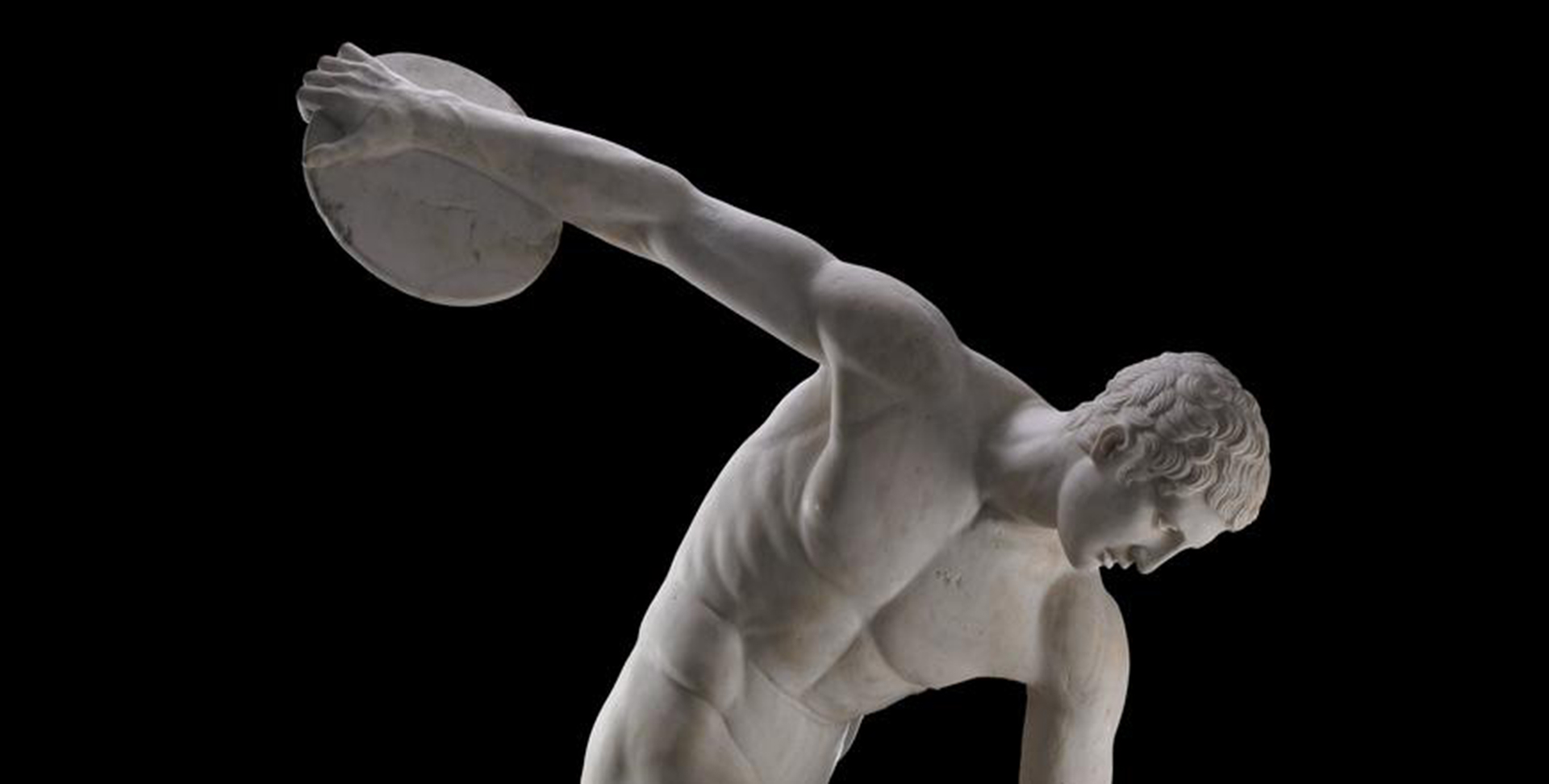

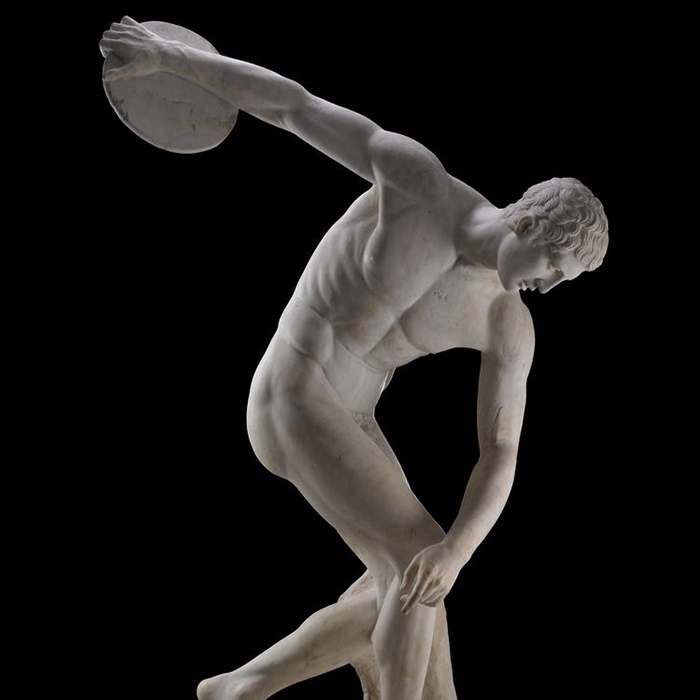
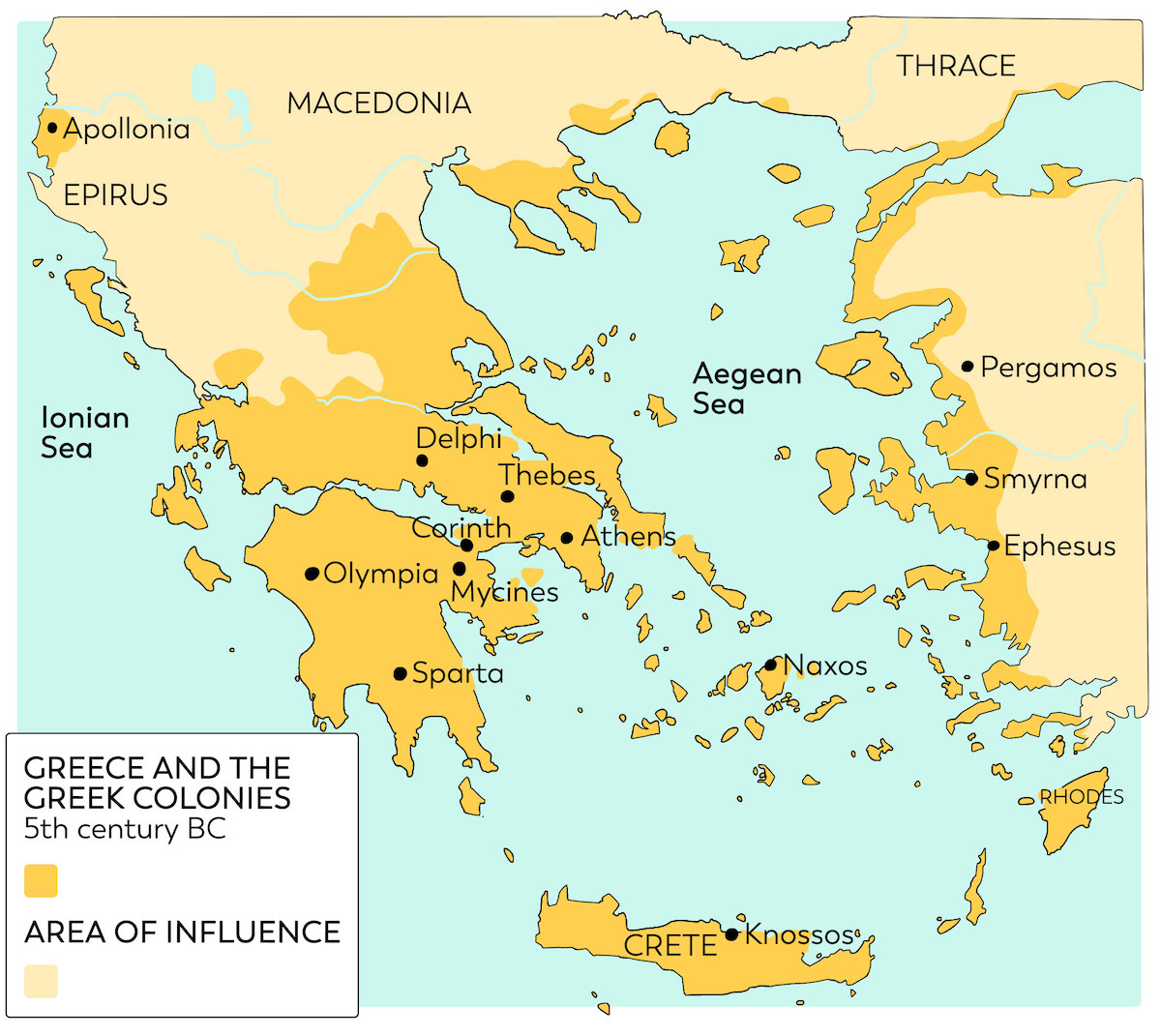
Ancient Greek art is characterized by the idea that it may be perfected: you can always do better to satisfy the gods!
This partly explains why it changed and developed so quickly, because in the space of seven centuries Greek artists changed their style from highly geometrical small-scale art to giant naturalist statues.
We should be attentive to the fact that Western art during the next few centuries was rooted in Ancient Greek art. The latter is therefore essential to our understanding of everything that happened later.

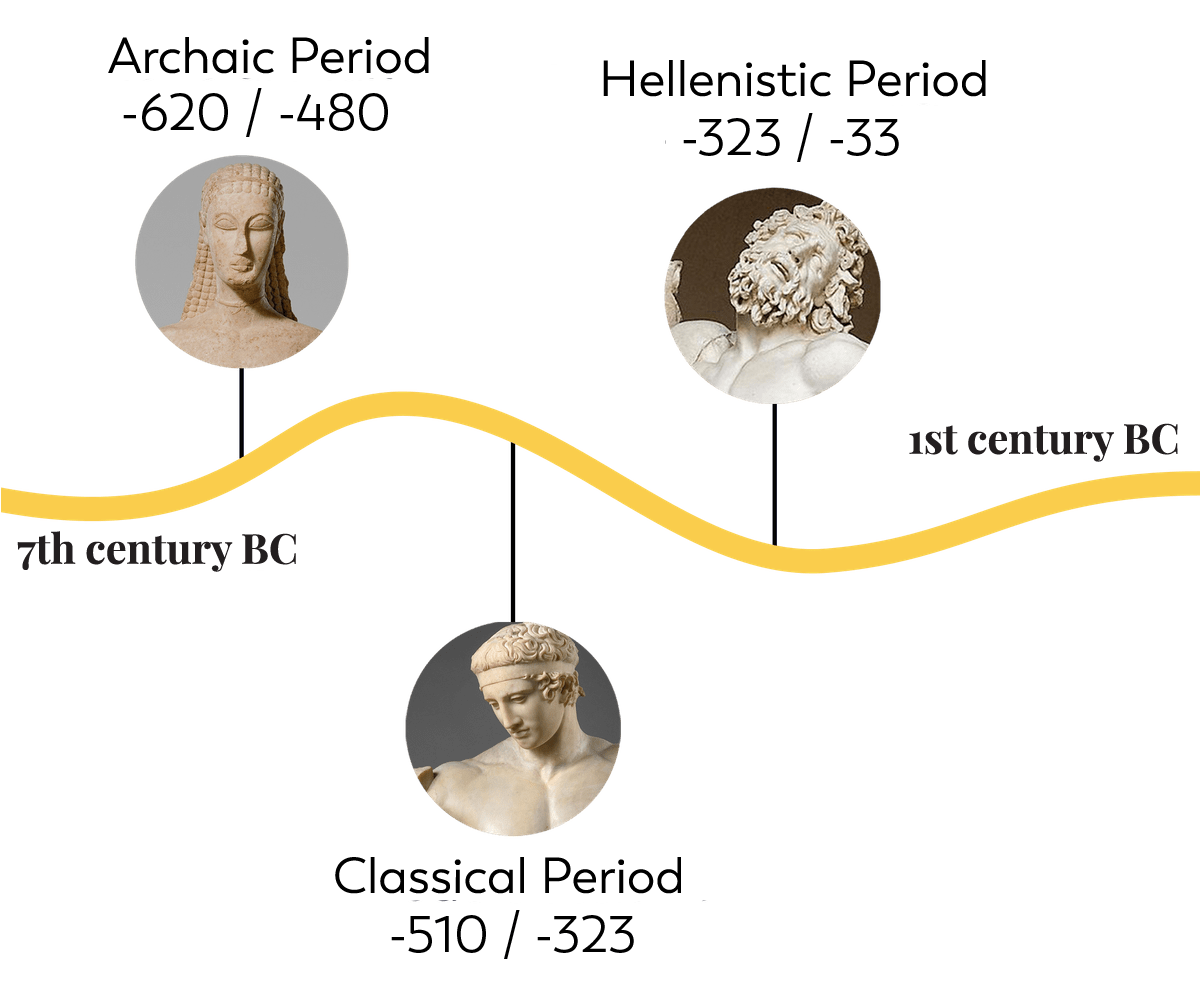

Ancient Greek art, on which Western art is founded, has greatly changed during the last seven centuries.
Let’s start with the first large-scale movement: Archaic art.
It is generally situated between the end of the 7th century and the beginning of the 5th century BC. La Dame d’Auxerre (The Lady of Auxerre) is one of the very first examples of this. Greek artists began to produce large sculptures for the first time. These were known as kouros for a statue of a young man, or korê for a young woman.

If we observe them, we find all the characteristics of archaic art.

During the Archaic period, artists created large sculptures representing young women or young men.
Greek art developed very quickly and during the 5th century BC it was already moving towards classical art.
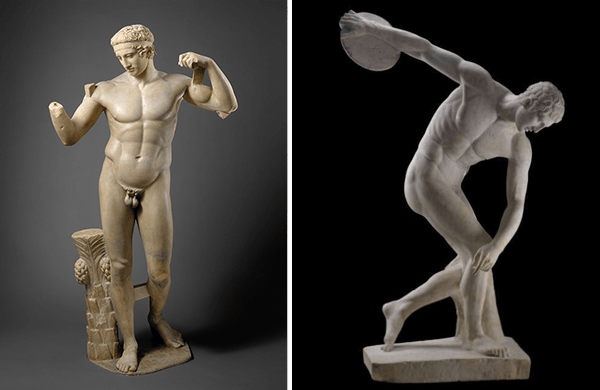
Here are its characteristics in the field of sculpture:
Classical Greek art remained an absolute reference for Western artists for centuries.
It was the timeless model for Renaissance artists like Michelangelo and even for some painters and sculptors during the 19th century.

Classical Greek art was a model for Western art for centuries.
The reason for which classical sculptures seemed so close to a real human body is because they respected a “canon”. What’s that?
The word “canon” describes an ideal beauty that changes from era to era, defining the “perfect” human body in terms of a system of proportions.
For example, classical sculptors considered that the head must be a seventh or an eighth of the height of the body, which is close to anatomical reality.
This canon, which may be found in all classical art, is also known as the “Canon of Polykleitos”, from the name of the sculptor Polykleitos.


The Greek ideal of beauty, known as the “canon”, describes a body with certain proportions.
The other great name to remember is Praxiteles, who used all the classical characteristics, adding his own personal touch: the bodies that he sculpted had increasingly natural, curvaceous postures…
He also created several sculptures of nude women, making a mark on the next few generations.
Unfortunately, we have no original work that we can attribute to him with certainty: everything that we know about his art is based on copies and reinterpretations of these lost originals.

Sculptures by Praxiteles repeated the classical codes, but in more natural postures.
How can we make sense of the gods and goddesses sculpted by all of these artists? The Ancient Greeks were actually polytheistic, meaning that they revered many deities. There were twelve main deities, each of whom had very specific tasks. Here are a few of them.

The Greeks, who were polytheists, revered twelve main deities, including Zeus, Poseidon and Athena.

"*" indicates required fields